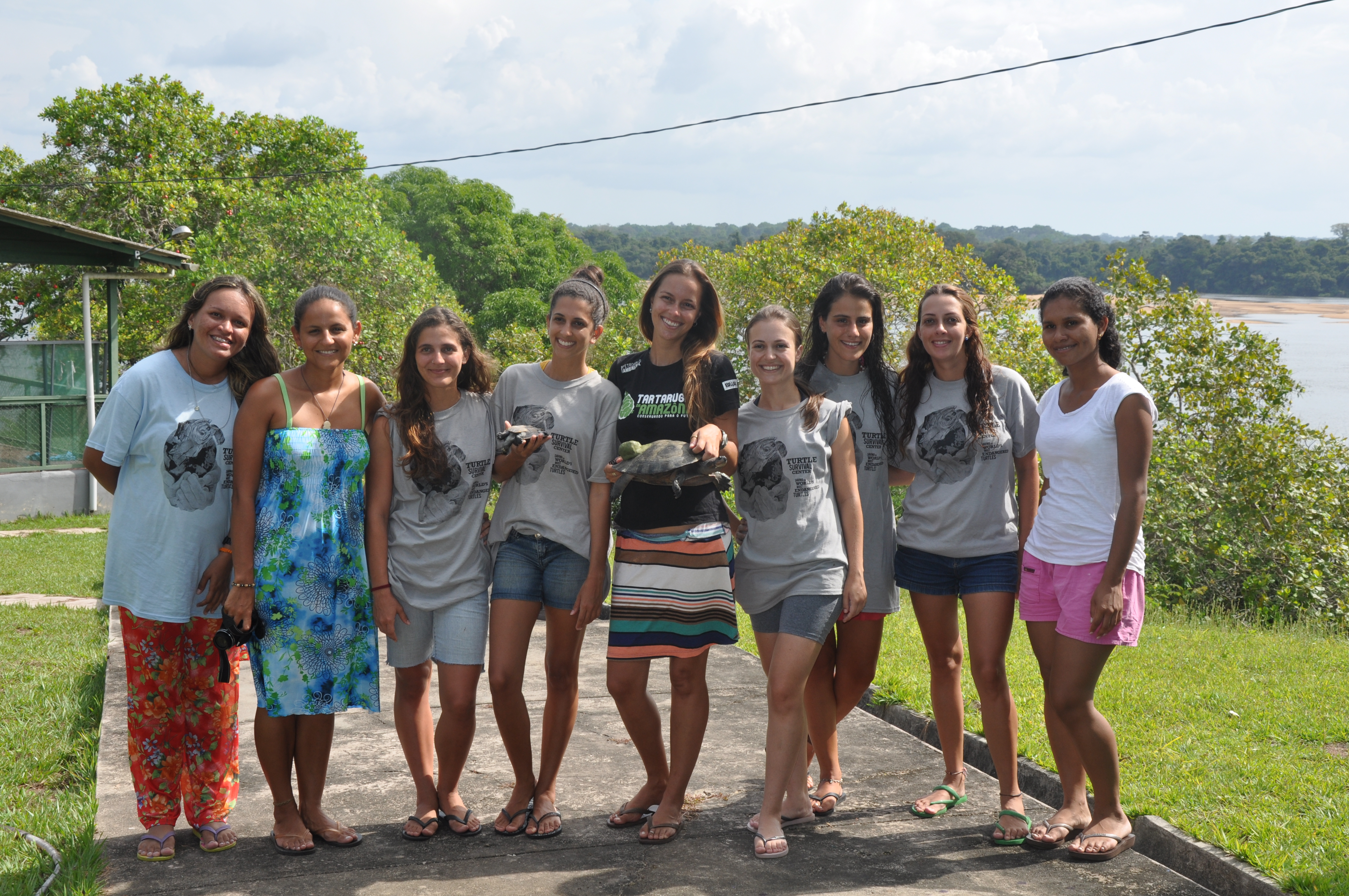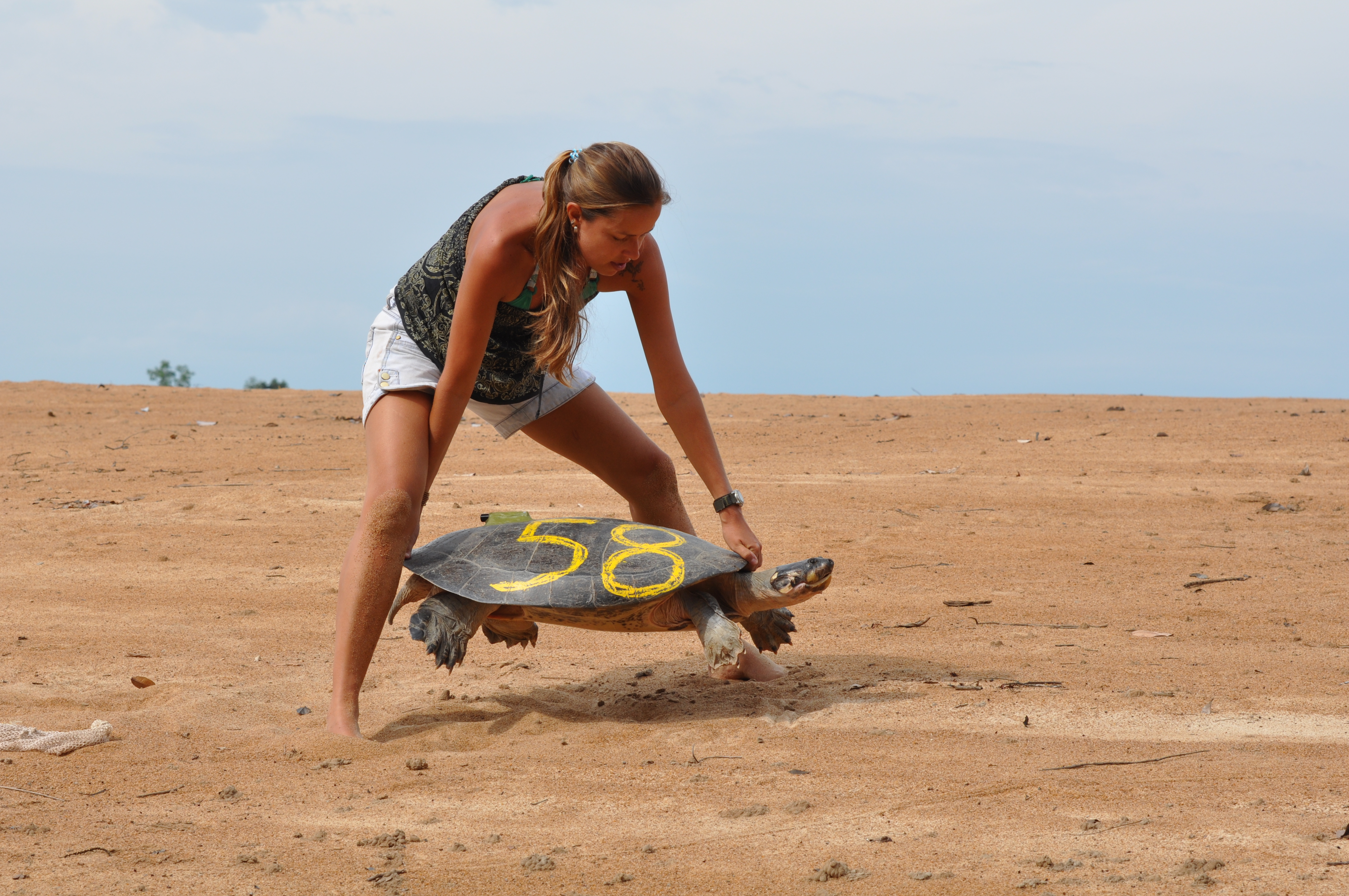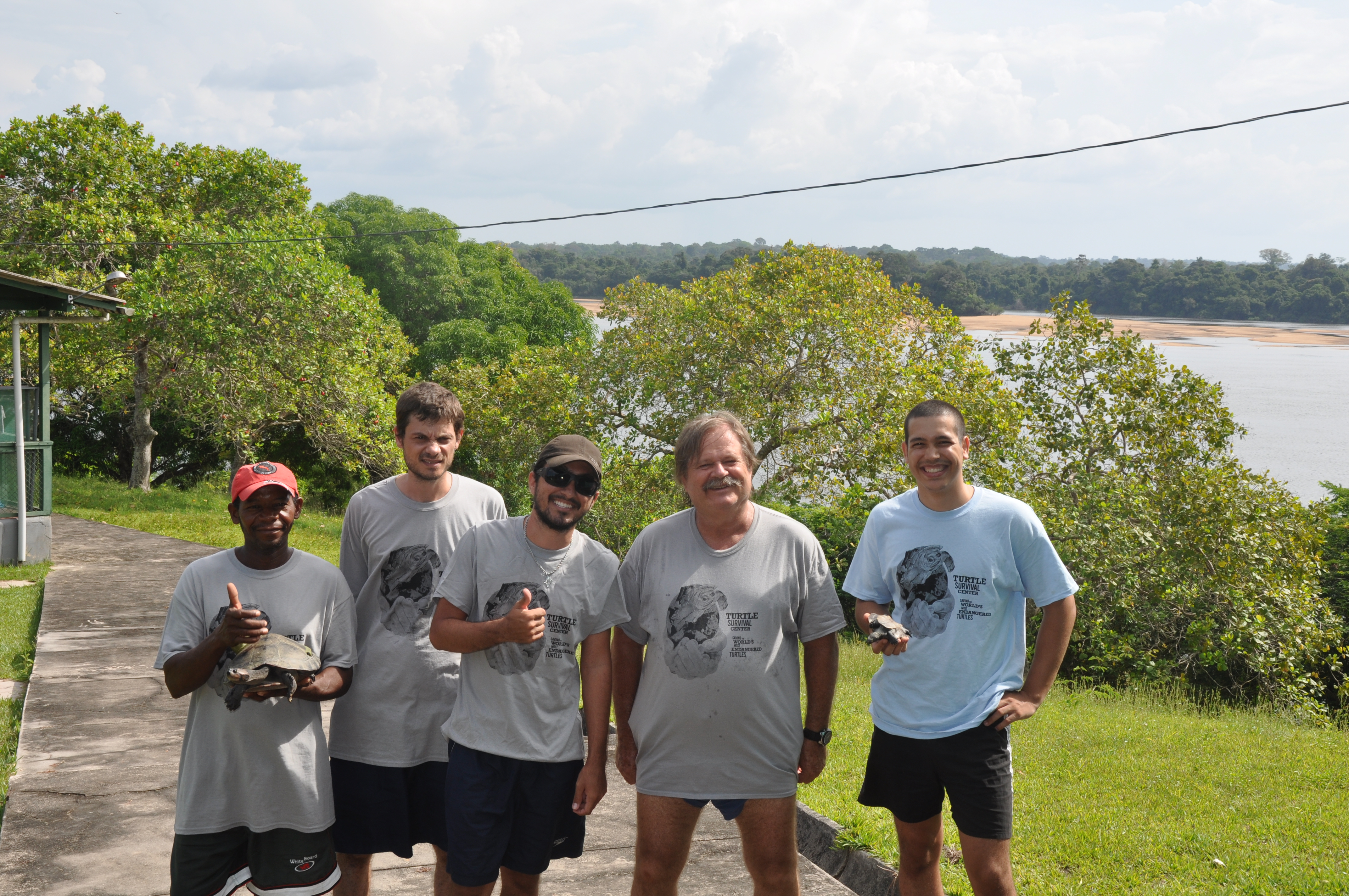Turtle Research Course Conducted in Brazil
by R. Vogt 
 The 25th annual graduate level course on Field Methods for Conducting Research with Freshwater Turtles in the Brazilian Amazon was conducted October 1-12, 2013 with the financial support of Turtle Survival Alliance.
The 25th annual graduate level course on Field Methods for Conducting Research with Freshwater Turtles in the Brazilian Amazon was conducted October 1-12, 2013 with the financial support of Turtle Survival Alliance.
This year, 15 students from diverse regions of Brazil and Portugal participated in the course, including five students who are conducting research for their masters theses on turtles in the Amazon. The course began with basic lectures on turtle biology on the boat during the trip from Manaus to the Biological Station on the Trombetas River to prepare the students for the field work.
 Apart from allowing the students to participate in the standard methods for marking, measuring, and capturing turtles, they practiced different methods for blood extraction, transferring nests that were too close to the river margin, stomach flushing, and attaching VHF and sonic transmitters. The students were able to participate in locating turtles with both sonic and VHF transmitters, as well as participate in ongoing research on underwater turtle vocalizations using hydrophones and underwater speakers for playback experiments.
Apart from allowing the students to participate in the standard methods for marking, measuring, and capturing turtles, they practiced different methods for blood extraction, transferring nests that were too close to the river margin, stomach flushing, and attaching VHF and sonic transmitters. The students were able to participate in locating turtles with both sonic and VHF transmitters, as well as participate in ongoing research on underwater turtle vocalizations using hydrophones and underwater speakers for playback experiments.
 During the course, students were able to capture the four Podocnemididae found in the region and participate in nesting studies of all of these species as well. The most exciting discovery during the course was the recapture of an adult female Peltocephalus dumeriliana which had been released 17 years ago as a hatchling. Judging from the size of the most recent growth rings, she has been mature for at least five years.
During the course, students were able to capture the four Podocnemididae found in the region and participate in nesting studies of all of these species as well. The most exciting discovery during the course was the recapture of an adult female Peltocephalus dumeriliana which had been released 17 years ago as a hatchling. Judging from the size of the most recent growth rings, she has been mature for at least five years.
In addition to the hands on research with turtle field biology, the students were able to witness the ongoing struggle to protect turtle nesting beaches from poaching and talk with the local people who collect these species. Our environmental education program and participation of people from the communities in nest protection is aimed to reduce nest poaching and trafficking in adult turtles. The students participated in the ongoing monitoring of nesting female size to estimate the demography of the nesting females, particularly to document recruitment, as evidenced by smaller size, growth rings, and smaller nest size.
 I was depressed by the comments of one of the students who said that Brazil cannot afford the luxury of maintaining Podocnemis expansa populations in nature, but rather must invest its resources for advancing the economy of the country such as hydroelectric dams which are an eminent threat to the survivorship of this species. Only through large scale training and environmental education programs can we hope to convince the Brazilian people of the need to protect these species. Trombetas is safe for now, but the Rio Madeira is being dammed. One of the largest populations of Podocnemis expansa will be destroyed by the Montebelo dam on the Rio Xingu. The population behind the Balbinas dam on the Rio Uatuma has already been destroyed, as they have no viable nesting habitat. New prospects for dams are also being conducted on the Rio Negro and Rio Blanco. It will take a worldwide effort to stop this damming process in Brazil or we will lose this species to the industrialization of these rivers.
I was depressed by the comments of one of the students who said that Brazil cannot afford the luxury of maintaining Podocnemis expansa populations in nature, but rather must invest its resources for advancing the economy of the country such as hydroelectric dams which are an eminent threat to the survivorship of this species. Only through large scale training and environmental education programs can we hope to convince the Brazilian people of the need to protect these species. Trombetas is safe for now, but the Rio Madeira is being dammed. One of the largest populations of Podocnemis expansa will be destroyed by the Montebelo dam on the Rio Xingu. The population behind the Balbinas dam on the Rio Uatuma has already been destroyed, as they have no viable nesting habitat. New prospects for dams are also being conducted on the Rio Negro and Rio Blanco. It will take a worldwide effort to stop this damming process in Brazil or we will lose this species to the industrialization of these rivers.
